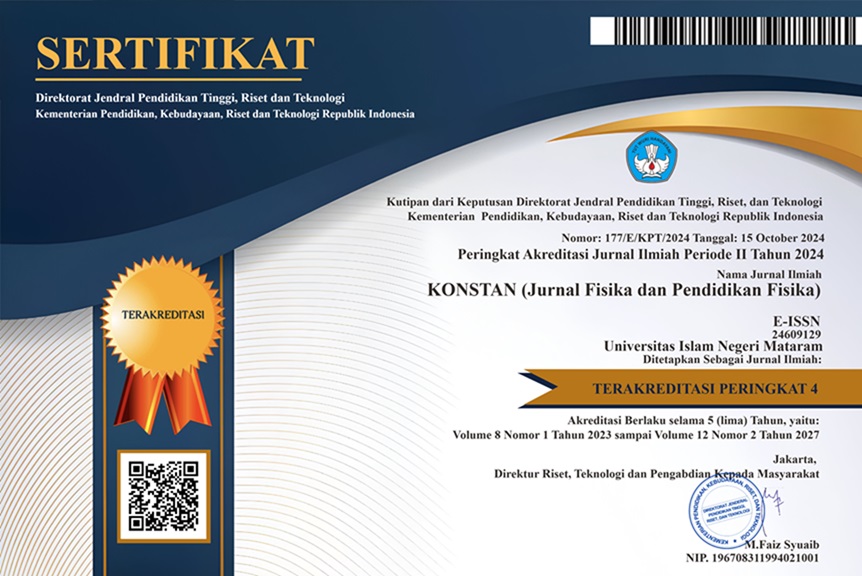Characteristics of Calcium Oxide from Pearl Shells (Pinctada Maxima) based on Calcination Temperature
Abstract
Pearl clam shell waste can be decomposed as a result of CaO compounds. CaO is a compound that can be applied in various fields such as biomaterials, electronics, agricultural industries, and others, for example as a source of biological calcium which plays a role in the growth and survival of shrimp, lobsters, and fish. This study aims to examine the effect of Calcination Temperature on calcium oxide (CaO) characteristics of pearl clam shells (Pinctada Maxima). The procedures carried out in this study include the preparation of pearl clam shells (pinctada maxima), the formation of Calcium Oxide (CaO) using the calcination method which is then continued with the characterization of the test sample. The CaO characteristics studied include CaO characteristics such as CaO compound content, powder size, powder density, bulk density and porosity. The results of measuring the CaO characteristics of pearl clam shells with variations in calcination temperature get an increase in calcination temperature resulting in the CaO yield value tending to decrease with an increase in CaO levels. Bulk density is not particularly affected by calcination temperature, but powder density tends to increase with temperature increase, whereas, porosity and particle size have smaller values. Interestingly, the values of density and porosity are inversely proportional which is closely related to empty cavities or pores formed as a result of differences in calcination temperature.




.png)
